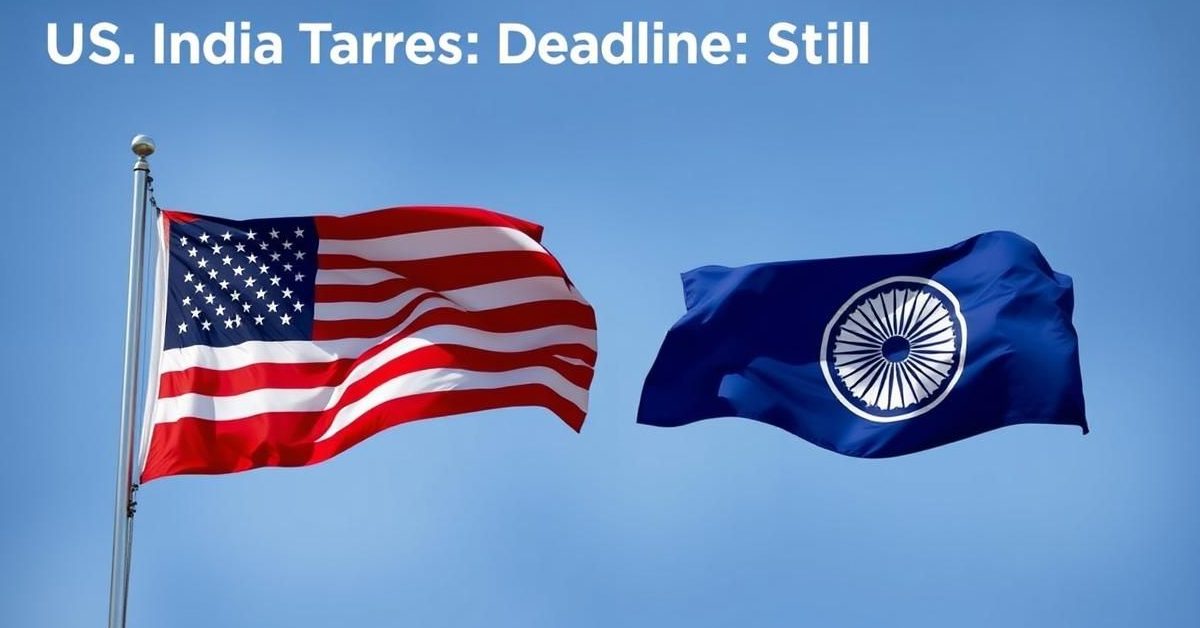Trade negotiations between the US and India are set to continue in mid-August, well after the August 1 “hard deadline” for potential new tariffs.
Ongoing Talks Amidst Tariff Threat
A US team, led by US Trade Representative for South and Central Asia Brendan Lynch, is expected to visit India in mid-August. This visit aims to continue trade negotiations, even though a crucial August 1 deadline for tariffs has passed.
Indian negotiators recently concluded another round of talks in Washington. While progress has been made on many tariff lines for goods, sensitive sectors like agriculture and automobiles remain sticking points. These areas are vital for job creation in India.
The “Hard Deadline” Looms Large
US Commerce Secretary Howard Lutnick stated that August 1 was a “hard deadline” for countries to start paying new tariffs. He emphasized that while discussions can continue, the new tariff rates would apply from that date.
President Donald Trump had previously shifted this deadline multiple times, from April 1 to July 9, and then to August 1. Trump has suggested a deal with India is close. However, India could face reciprocal tariffs of up to 26 percent if an agreement isn’t reached soon.
Lutnick also mentioned that smaller economies might face a baseline tariff of 10 percent, while “bigger economies” would either open up their markets or pay “fair tariffs” to the US.
India’s Strategic Approach
Indian government officials are aiming to finalize a bilateral trade agreement (BTA) by the end of the year. This agreement seeks to secure better market access for labor-intensive sectors and establish a significant tariff advantage compared to other Asian nations.
Experts Question Trade Deal Structure
Trade experts have voiced concerns that the deals proposed by the Trump administration don’t align with World Trade Organization (WTO) standards for Free Trade Agreements (FTAs). WTO rules typically require mutual tariff reductions across a substantial portion of trade.
According to the Global Trade Research Initiative (GTRI), under the current US model, only the partner country lowers its tariffs, with no reciprocal cuts from the US. The US lacks the necessary authority from Congress to reduce its Most-Favoured-Nation (MFN) tariffs.
Instead, the US is offering to roll back “Liberation Day” tariffs, which were imposed in April under emergency powers. A US federal court has already ruled these tariffs unlawful, although the case is under appeal, leaving their legal basis somewhat fragile.
For India, the April tariffs added a 26 percent surcharge on top of existing US tariffs. Even if a deal is struck, GTRI suggests that Indian exports might still face a minimum 10 percent additional levy. This makes it more of a pressured compromise than a true partnership.
- US and India are negotiating a trade agreement, but talks are stalled on agriculture and automobiles.
- A US team will visit India in mid-August, after the August 1 “hard deadline” for new tariffs.
- India could face up to 26 percent reciprocal tariffs if a deal isn’t struck soon.
- Trade experts argue that the US “deals” don’t meet WTO Free Trade Agreement standards due to a lack of reciprocal tariff cuts from the US.
The continued uncertainty highlights the complex nature of the ongoing trade discussions between the two nations.














